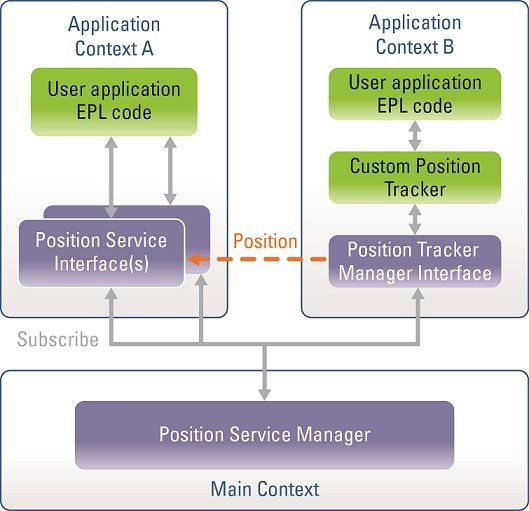Position service framework architecture
The following figure shows the typical architecture of the position service framework.
The "position service interface" provides the main interface for your application to subscribe to position trackers and monitor position updates based on the configuration provided. You can create a position service interface in any context and use it to subscribe to one or more previously-created position trackers.
The correlator automatically creates the "position service manager" in the main context of your application. This happens upon injection because the
Position Management Service bundle is in your application. The position service manager handles all position tracker subscriptions in the application and automatically takes care of their persistence and recovery. See
Position service framework and persistence. Each subscription has a unique subscription ID. An application must use the position service interface to interact with the position service manager; an application cannot interact directly with the position service manager.
The position service framework supports multiple contexts. You can create position service interfaces in any context, and you can set up as many postion trackers as desired in as many contexts as you need.
The following figure includes the "position tracker manager interface" in the position service architecture. The position tracker manager interface lets you create custom position tracker implementations that you can use in the position service architecture. The default position tracker implementations use the position tracker manager interface.


